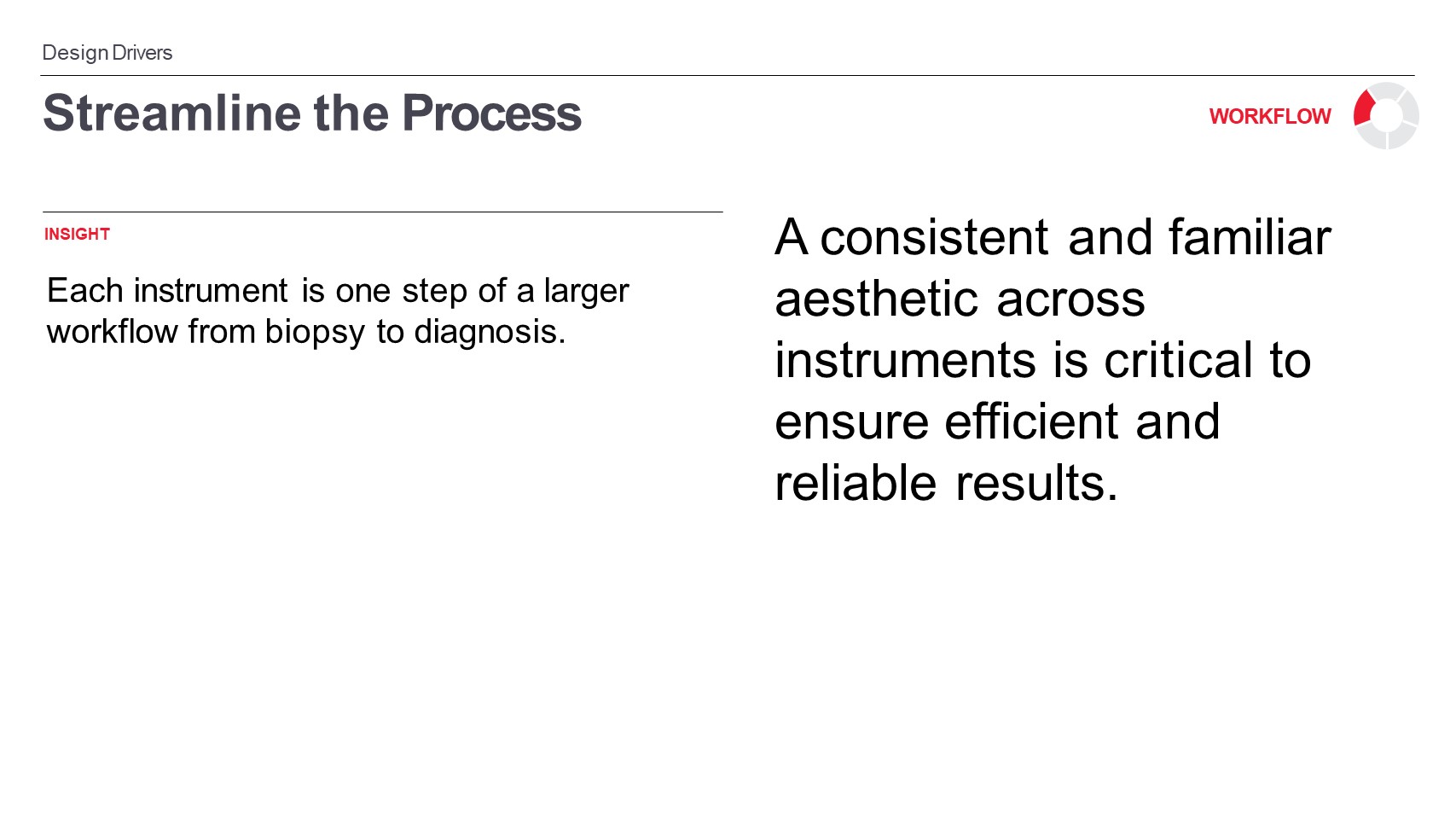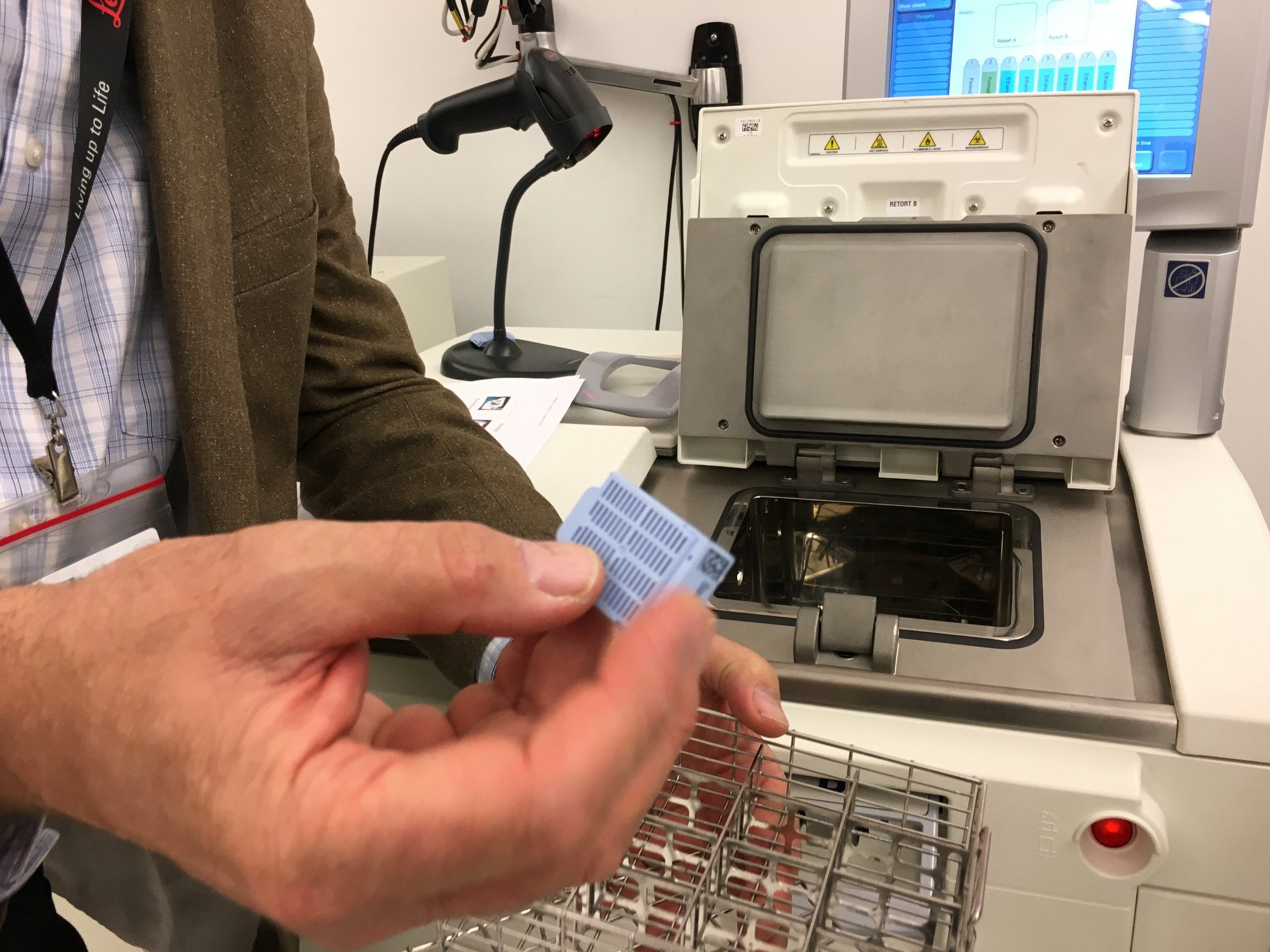Project Goal
Evolve the look and feel of all of the devices in the ecosystem to provide customers with a market solution that is visually cohesive and tells the story of a comprehensive, end-to-end offering. Develop signature design drivers and Color-Material-Finish specifications that embody the brand values, distinguish from the competition and pass the “6-foot test.”
Timeline
Phase 1 Plan & Align
The research and design team spent a week to gain in-depth knowledge of the cancer diagnosis workflow and get trained on 4 devices (Breast Biopsy Equipment, Tissue Processor, Immuno Histo-Stainer and Scanner). These 4 devices were chosen to represent the whole ecosystem and later used for developing design directions
Research Planning
Research questions and discussion activities were planned to understand current perceptions of the client’s products and competitors, learn what drives preferences for using certain products, discuss and build on Design Languages for the future of these devices.
Understanding Perception
Defining Look and Feel
Co-creation to identify desired visual attributes
Phase 2 Immerse & Synthesize
The team spent over 27 hours observing and speaking to 6 technicians, 4 lab supervisors, 4 radiologists, 3 patients, 3 histo-technologists, 2 pathologists at 8 unique locations (Radiology Centers and Advanced Pathology Labs) in Midwest U.S. and facilities learning about 7 instruments across the workflow.
Synthesis
The 5-element framework was the outcome of the research synthesis. The presentation slides below show how the research Observations led to Insights which helped define the Design Drivers and Tactics for future products.
Research Presentation (click through to see next slides)















Phase 3 Explore & Validate
After the development of 3 design directions for future products, international validation research was conducted to understand cultural perceptions and identify any needs for modifications. This round of research was also intended to help the client make an informed decision while selecting a design direction for further development.
Design Directions
The Validation Research involved remote video-interviews with a total of 4 radiologists, 4 lab managers, 4 histo-technologists and 4 pathologists from China, Japan, Germany and West Coast U.S.A. A quantitative study was also conducted with approximately 60 such individuals from these four regions.
Photographs from field sent by participant
Video calls to interview participants
Questionnaire for quantitative study
Research Synthesis
The research summary included data about the cultural fit of these design directions in different regions of the world and and user perception in relation to the design drivers defined during the previous round of research.



The client chose a design direction based on this information and the project was handed off to the industrial design and graphic design team for Phase 4: Evolving the attributes and Defining the guidelines

